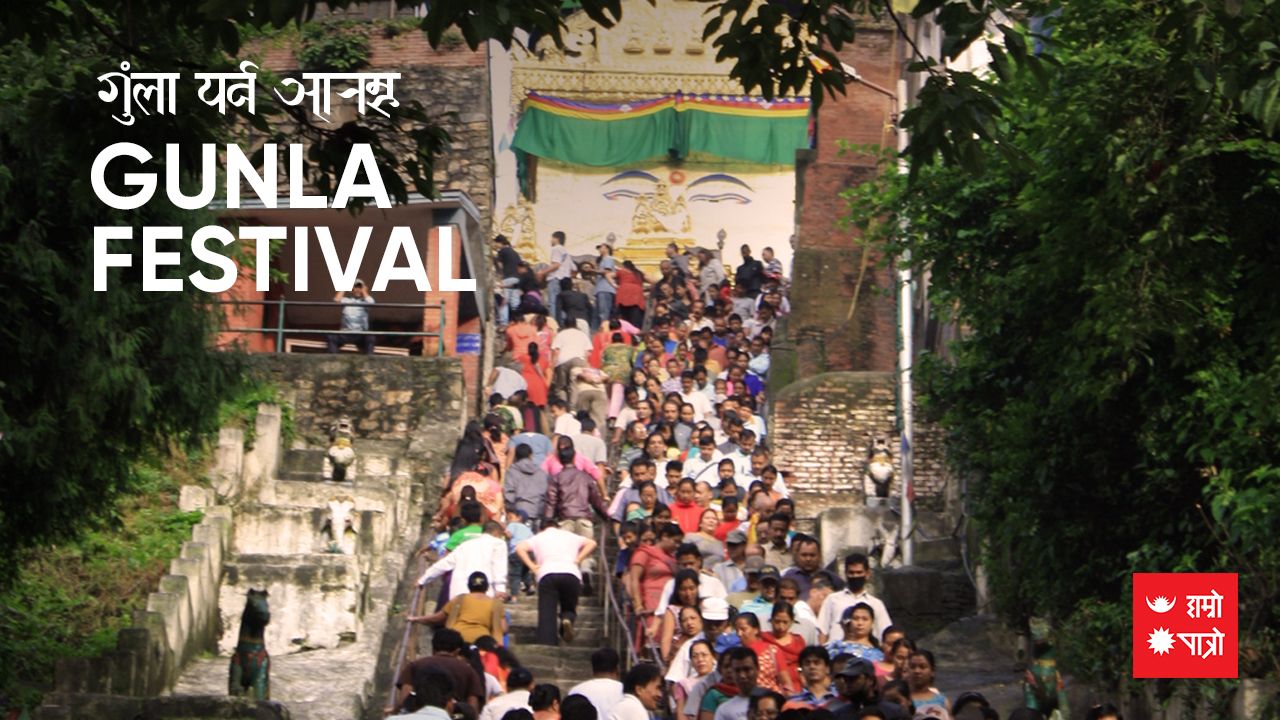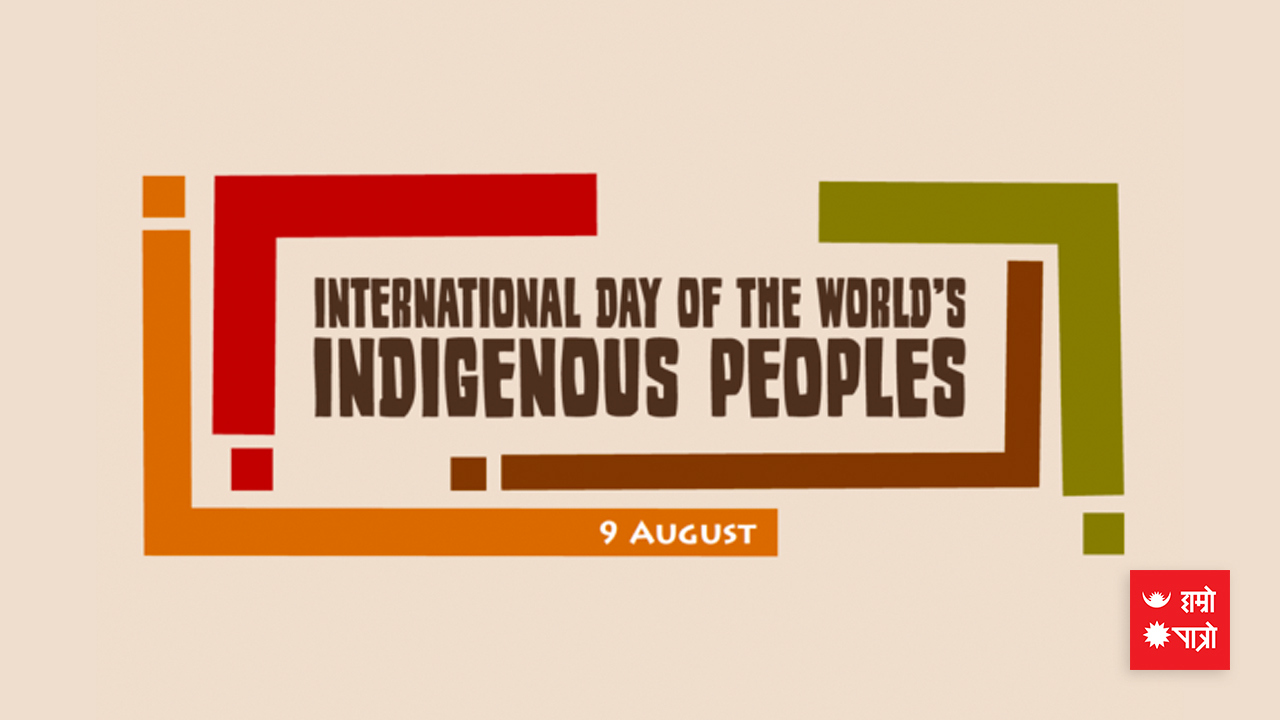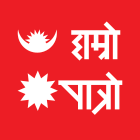Upcomming Events
-
19Mangsir
-
21MangsirInternational Civil Aviation Day 2 days remaning
-
22MangsirInternational Dignified Menstruation Day 3 days remaning
-
23MangsirInternational Anti-corruption Day 4 days remaning
-
24MangsirInternational Human Rights Day 5 days remaning
-
25MangsirInternational Mountain Day 6 days remaning
-
26MangsirGorakhkali Puja/International Day of Neutrality 7 days remaning
-
29MangsirSafala Ekadashi Vrata 10 days remaning
-
1PaushDhanu Sankranti 11 days remaning
-
2PaushPradosh Vrata 12 days remaning
-
3PaushInternational Immigrants Day 13 days remaning
-
5PaushTol Lhosar 15 days remaning
-
6PaushWorld Meditation Day 16 days remaning
-
10PaushChristmas 20 days remaning
-
13PaushGorakhkali Puja 23 days remaning
-
15PaushTamu Lhosar/Kavi Siromani Lekhnath Jayanti/Putrada Ekadashi Vrata 25 days remaning
-
17PaushNew Year 2026/Pradosh Vrata/Topi Day/Poshak Day 27 days remaning
-
19PaushSri Swasthani Vrata Katha Prarambha/Maagh Snan/Poornima Vrata 29 days remaning
-
21PaushGuru Gobinda Singh Jayanti 31 days remaning
-
23PaushAraniko Smriti Day 33 days remaning
-
24PaushNepal Astrology Council Establishment Day 34 days remaning
-
27PaushPrithivi Jayanti/Rashtriya Ekata Diwas/Gorakhkali Puja 37 days remaning
-
29PaushNational Bhakka Day 39 days remaning
-
30PaushShattila Ekadashi 40 days remaning
-
1MaghMakar Sankranti/Ghiu chaku khane Din/Uttarayan Arambha 41 days remaning
-
2MaghNational Earthquake Safety Day/Pradosh Vrata 42 days remaning
-
5MaghSonam Lhochhar/Shree Ballav Jayanti 45 days remaning
-
8MaghTilkunda Chauthi 48 days remaning
-
9MaghBasanta Panchami vrata/Saraswati Pooja 49 days remaning
-
10MaghSkanda Sasti/Achala Saptami/International Day of Education 50 days remaning
-
11MaghGorakhkali Puja/World Leprosy Day 51 days remaning
-
12MaghInternational Custom Day 52 days remaning
-
13MaghDron Nawami 53 days remaning
-
15MaghBhima Ekadashi Vrata 55 days remaning
-
16MaghSahid Diwas/Pradosh Vrata 56 days remaning
-
18MaghShree Swasthani Brata Samapti/Poornima Wrata 58 days remaning
-
19MaghWorld Wetlands Day 59 days remaning
-
21MaghWorld Cancer Day 61 days remaning
-
25MaghRavisaptami Vrata 65 days remaning
-
26MaghGorakhkali Puja 66 days remaning
Jyotish
-
Jyotish Amrit Paudelवाराणसीकै सम्पूर्णानन्द संस्...
-
Jyotish Vaman Sapkotaशिक्षा - व्याकरणाचार्य, पौरोही...
-
Jyotish Narayan Prasad Gautamगुरुकुल शिक्षा प्रणालीबाट ज्�...
-
 Jyotish Dharmendra Krishna Paudelशास्त्री धर्मेन्द्र कृष्ण पौ�...
Jyotish Dharmendra Krishna Paudelशास्त्री धर्मेन्द्र कृष्ण पौ�...
-
Jyotish Mohan Ghimireसम्पुर्णानन्द संस्कृत विश्वव...
-
Jyotish Purushottam Ghimireनेपाल संस्कृत विश्वविद्यालय, �...
-
Jyotish Narayan Prasad Bhandariज्योतिषका उप-प्राध्यापक (lecturer of A...
-
 Jyotish Mukunda Sharmaस्वाध्याय, सत्सङ्ग र सदाचारजस�...
Jyotish Mukunda Sharmaस्वाध्याय, सत्सङ्ग र सदाचारजस�...
-
Jyotish Smarika Acharyaबाल्मीकि बिद्यापिठ बाट ज्योत�...
-
Jyotish Pandit Mukunda Nepalज्योतिष पण्डित मुकुन्द नेपाल�...
-
Jyotish Damodar Poudelनेपाल संस्कृत विश्व बिद्यालय�...
-
 Jyotish Kuresh Pandey११ वर्षको अनुभवसहित विभिन्न ध�...
Jyotish Kuresh Pandey११ वर्षको अनुभवसहित विभिन्न ध�...
-
Jyotish Krishna Prasad Bhandariउपप्राध्यापक (Asst. professor of Sanskrit) नेपा�...
-
Jyotish Deepak Prasad Kafleसम्पूर्णानन्द संस्कृत विश्वव...
-
Jyotish Dipendra Khatiwadaसम्पुर्णानन्द संस्कृत बिश्वब...
-
Jyotish Damodar Kaushikज्योतिष र व्याकरण विषयमा आचार�...
-
Jyotish Khageshwor Subediगुरुकुल पद्दति बाट ज्योतिषीय �...
-
Jyotish Ghanashyam Pokharelनेपाल संस्कृत विश्वविद्यालयब...
-
Acharya Choodamani Pathakसम्पूर्णानन्दसंस्कृत विश्वव�...
-
Jyotish Dr. Janak Bhattaविगत ३५ वर्षदेखि कुण्डली निर्�...
-
Jyotish Khagendra Subediसम्पूर्णानंद संस्कृत विश्ववि...
साउन शुक्ल प्रतिपदा
The holy month of Gunla starts today, a traditional New Festival Gunla and its significance.

Presenting the content of the Gunla festival in your mobile companion, Hamro Patro. Here in Nepal, both the intoxication and the risk of rain are at their peak, and is the paddy planting finished?
As usual, news of landslides and floods construct major headlines with a tragic mortality rate. When the clouds rain like crazy, somewhere the stingy waters are staring ruthlessly flowing ahead with villages, hills, and dreams. Anyway, welcome to this month of the year and especially to the Gunlaparva which comes after the rainy season. During this Gunla month, the Gunla festival is celebrated exclusively in the Newa community and in some places where the Newa community is predominant, including the Kathmandu Valley.
Talking of the Gunla festival, I would like to quote Swayambhu Mahapuran here today. Today's Kathmandu is the city that Manjushree built for his followers. Thus, the custom of chaitya service started by Manjushree in the early days of the Bagmati civilization, which started with the Swayambhu Chaitya at its center, is now known as the Gunla festival. According to the Nepal Samvat, Gunla is an important month. In the local Newa language, "la" means month, and "gun" means mountain and forest. According to Bikram Samvat, the period from Shrawan Shukla Paksha Pratipada to Bhadra Shukla Paksha Pratipada is the month of Gunla.
The celebration of this festival is found to be more spiritual and contemplative in the Buddhist families of the community. Since Lord Buddha and his followers lived in the same place without traveling during the rainy season, this festival is also considered as a confluence of rain and knowledge. Especially in the Gunla festival celebrated by the Newar community, there is a tradition of going to see Lord Swayambhu in the morning. Today, special music can be heard at the crossroads of the Kathmandu Valley, while the number of devotees visiting various monasteries, temples, and spiritual places are high.
Bahidya: Swavanegu Newa: is a unique part of the culture where there are instruments and music first and then devotees march. Such Jhankis can be seen in abundance in the Kathmandu Valley. Dya: Thayegu is one of the special activities of today. Today, it is customary to make small stupas using raw black clay. In Kathmandu and Lalitpur, it is customary to carry a statue of Panjara, i.e. Buddha, and other saints, and khat (Chariot) representing God in the city, and to collect items such as rice, lentils from the community.
The Buddhist way is a philosophy advocating balance where spirituality, including charity and peace, is highly valued. The statues of Dipankar Buddha and Pauva are special on this day, although Gunla is not just a one-day festival. This festival is celebrated in different ways on different dates of the lunar tithis.
Let's draw the outlines of our daily routine in the open sky and clear clouds that come with the end of the rainy season. Good luck to all.
International Day of the World's Indigenous Peoples
Leaving no one behind
Indigenous peoples and the call for a new social contract is the theme for International Day of the World's Indigenous Peoples of the year 2021.
Over 476 million indigenous peoples are living in 90 countries across the world, accounting for 6.2 percent of the global population. Indigenous peoples are the holders of a vast diversity of unique cultures, traditions, languages, and knowledge systems. They have a special relationship with their lands and hold diverse concepts of development based on their worldviews and priorities.
Indigenous people are called Adivasi in the Nepali language. 'Adi' refers to an ancient historical time, hence the people who have been living in a place for a very long time and have been cultivating the soil of that land for generations and have many original identities including arts and crafts are called AdiVasi.
The context of this year's Adivasi diwas or the international day of the world's indigenous peoples is different due to the COVID 19 pandemic. There is another group of people who are worrying about the threat of pandemics, long before COVID: Indigenous people. They are very much connected with the natural world and traditional skills, they have long known that the degradation of the environment has the potential to unleash the disease, this also holds in the year 2021.
Safeguarding indigenous people and their knowledge is the major issue today, their territories are home to 80% of the world's biodiversity and they teach us the balance of life and nature like no one else. The United Nations General Assembly on December 23, 1994, introduced the concept of celebrating August 9 as the International Day of Indigenous Peoples. The United Nations had earlier called for a decade from 1994 to 2004, including the Indigenous Decade for Action and Dignity.
The UN logo for the day was designed by Bangladeshi artist Reban Dewan. The logo features two green-eared ears that surround the earth.
With the development of human civilization and the beginning of migration, the density of immigrants has gradually increased and their identity, existence, different qualities, and customs have started to decrease.
Indigenous peoples, who make up 5 percent of the world's population, make up 15 percent of the world's poor.
The identity and presence of indigenous peoples from the polar regions of the earth to the South Pacific coast are declining as the later immigrant communities have been dominated by various sectors including occupation, identity, and settlement.
Article 14 of the United Nations Declaration on the Rights of Indigenous Peoples states that indigenous peoples have the right to establish and control educational systems and institutions appropriate to their culture, language, customs, and traditions. Various studies have clearly shown the huge disparity between indigenous and non-indigenous communities in terms of educational opportunities, development, and overall human rights facilities.
Indigenous communities, who have been munching on nature for generations, are an ancient asset to the world, and maintaining their identity in the mainstream of development has been a major challenge for the world community. There are indigenous communities in most parts of Nepal, a multi-ethnic, multi-religious, and multi-cultural country, and they are rapidly trying to keep their identity, customs, and originality alive. Shockingly, things have not been able to continue and even the identity has been lost by changing their original surname.
The bitter truth is that their presence in their place will be more beneficial to the world and the community than to the cities, settlements, and connected factories built by displacing and dislocating the indigenous peoples.
A comfortable, simple, and developed society is the responsibility of all of us for the Adivasi community. Whether we are a non-Adivasi or Adivasi community, it is important to show the next generation a realistic picture of the society and a reflection of the origin of development. Happy Adivasi Day to all!
Suyog Dhakal
Upcomming Events
-
19Mangsir
-
21MangsirInternational Civil Aviation Day 2 days remaning
-
22MangsirInternational Dignified Menstruation Day 3 days remaning
-
23MangsirInternational Anti-corruption Day 4 days remaning
-
24MangsirInternational Human Rights Day 5 days remaning
-
25MangsirInternational Mountain Day 6 days remaning
-
26MangsirGorakhkali Puja/International Day of Neutrality 7 days remaning
-
29MangsirSafala Ekadashi Vrata 10 days remaning
-
1PaushDhanu Sankranti 11 days remaning
-
2PaushPradosh Vrata 12 days remaning
-
3PaushInternational Immigrants Day 13 days remaning
-
5PaushTol Lhosar 15 days remaning
-
6PaushWorld Meditation Day 16 days remaning
-
10PaushChristmas 20 days remaning
-
13PaushGorakhkali Puja 23 days remaning
-
15PaushTamu Lhosar/Kavi Siromani Lekhnath Jayanti/Putrada Ekadashi Vrata 25 days remaning
-
17PaushNew Year 2026/Pradosh Vrata/Topi Day/Poshak Day 27 days remaning
-
19PaushSri Swasthani Vrata Katha Prarambha/Maagh Snan/Poornima Vrata 29 days remaning
-
21PaushGuru Gobinda Singh Jayanti 31 days remaning
-
23PaushAraniko Smriti Day 33 days remaning
-
24PaushNepal Astrology Council Establishment Day 34 days remaning
-
27PaushPrithivi Jayanti/Rashtriya Ekata Diwas/Gorakhkali Puja 37 days remaning
-
29PaushNational Bhakka Day 39 days remaning
-
30PaushShattila Ekadashi 40 days remaning
-
1MaghMakar Sankranti/Ghiu chaku khane Din/Uttarayan Arambha 41 days remaning
-
2MaghNational Earthquake Safety Day/Pradosh Vrata 42 days remaning
-
5MaghSonam Lhochhar/Shree Ballav Jayanti 45 days remaning
-
8MaghTilkunda Chauthi 48 days remaning
-
9MaghBasanta Panchami vrata/Saraswati Pooja 49 days remaning
-
10MaghSkanda Sasti/Achala Saptami/International Day of Education 50 days remaning
-
11MaghGorakhkali Puja/World Leprosy Day 51 days remaning
-
12MaghInternational Custom Day 52 days remaning
-
13MaghDron Nawami 53 days remaning
-
15MaghBhima Ekadashi Vrata 55 days remaning
-
16MaghSahid Diwas/Pradosh Vrata 56 days remaning
-
18MaghShree Swasthani Brata Samapti/Poornima Wrata 58 days remaning
-
19MaghWorld Wetlands Day 59 days remaning
-
21MaghWorld Cancer Day 61 days remaning
-
25MaghRavisaptami Vrata 65 days remaning
-
26MaghGorakhkali Puja 66 days remaning
Jyotish
-
Jyotish Amrit Paudelवाराणसीकै सम्पूर्णानन्द संस्...
-
Jyotish Vaman Sapkotaशिक्षा - व्याकरणाचार्य, पौरोही...
-
Jyotish Narayan Prasad Gautamगुरुकुल शिक्षा प्रणालीबाट ज्�...
-
 Jyotish Dharmendra Krishna Paudelशास्त्री धर्मेन्द्र कृष्ण पौ�...
Jyotish Dharmendra Krishna Paudelशास्त्री धर्मेन्द्र कृष्ण पौ�...
-
Jyotish Mohan Ghimireसम्पुर्णानन्द संस्कृत विश्वव...
-
Jyotish Purushottam Ghimireनेपाल संस्कृत विश्वविद्यालय, �...
-
Jyotish Narayan Prasad Bhandariज्योतिषका उप-प्राध्यापक (lecturer of A...
-
 Jyotish Mukunda Sharmaस्वाध्याय, सत्सङ्ग र सदाचारजस�...
Jyotish Mukunda Sharmaस्वाध्याय, सत्सङ्ग र सदाचारजस�...
-
Jyotish Smarika Acharyaबाल्मीकि बिद्यापिठ बाट ज्योत�...
-
Jyotish Pandit Mukunda Nepalज्योतिष पण्डित मुकुन्द नेपाल�...
-
Jyotish Damodar Poudelनेपाल संस्कृत विश्व बिद्यालय�...
-
 Jyotish Kuresh Pandey११ वर्षको अनुभवसहित विभिन्न ध�...
Jyotish Kuresh Pandey११ वर्षको अनुभवसहित विभिन्न ध�...
-
Jyotish Krishna Prasad Bhandariउपप्राध्यापक (Asst. professor of Sanskrit) नेपा�...
-
Jyotish Deepak Prasad Kafleसम्पूर्णानन्द संस्कृत विश्वव...
-
Jyotish Dipendra Khatiwadaसम्पुर्णानन्द संस्कृत बिश्वब...
-
Jyotish Damodar Kaushikज्योतिष र व्याकरण विषयमा आचार�...
-
Jyotish Khageshwor Subediगुरुकुल पद्दति बाट ज्योतिषीय �...
-
Jyotish Ghanashyam Pokharelनेपाल संस्कृत विश्वविद्यालयब...
-
Acharya Choodamani Pathakसम्पूर्णानन्दसंस्कृत विश्वव�...
-
Jyotish Dr. Janak Bhattaविगत ३५ वर्षदेखि कुण्डली निर्�...
-
Jyotish Khagendra Subediसम्पूर्णानंद संस्कृत विश्ववि...
Liked by:




















 Mesh
Mesh Brish
Brish Mithun
Mithun Karkat
Karkat  Singha
Singha  Kanya
Kanya Tula
Tula Brischik
Brischik Dhanu
Dhanu  Makar
Makar  Kumbha
Kumbha Meen
Meen